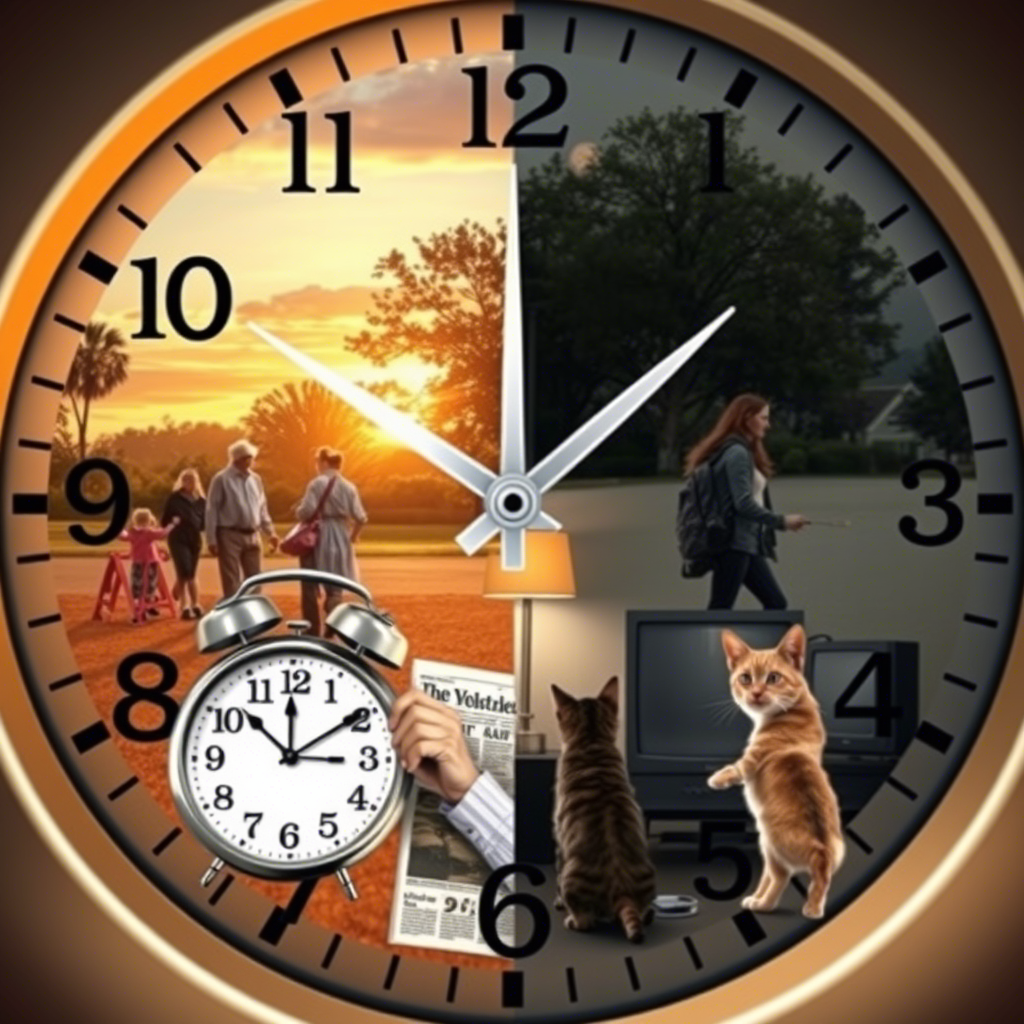The debate over daylight saving time (DST) continues as critics call it outdated and disruptive, while supporters value longer evenings. Politicians, including Trump, and lawmakers like Senator Rick Scott, push to make DST permanent. Florida leads with the Sunshine Protection Act, but federal approval is needed. The future of DST remains uncertain.
Twice a year, without fail, we all go through the same routine: changing our clocks for daylight saving time (DST). And twice a year, without fail, we all groan about it. Whether it’s losing an hour of sleep in the spring or trying to remember which clocks reset automatically in the fall, DST is one of those things that just feels… outdated. But is it? The debate over whether to keep, change, or scrap DST altogether has been heating up, with everyone from politicians to tech billionaires weighing in. So, what’s the deal? Let’s break it down.

Why Do We Even Do This?
Daylight saving time has been around for over a century. It started during World War I as a way to save energy by shifting the clocks forward in the spring, giving people more daylight in the evenings. The idea was that we’d use less electricity because we wouldn’t need to turn on the lights as early. Fast forward to today, and the benefits are… questionable. Studies show the energy savings are pretty minimal, and the downsides—like messing up our sleep schedules—are hard to ignore. Yet, here we are, still changing the clocks every year.
The Love-Hate Relationship with Daylight Saving Time
Let’s be real: not everyone hates DST. Some people love those long summer evenings when the sun stays out until 8 or 9 p.m. It’s perfect for backyard barbecues, evening walks, or just soaking up a little extra sunshine after work or school. But then there’s the flip side. In the winter, when the days are already short, DST means the sun doesn’t rise until later in the morning. For parents, that can mean sending kids to school in the dark. For early risers, it’s a gloomy start to the day.
And let’s not forget the actual act of changing the clocks. It’s 2023—why are we still manually adjusting our microwaves and car clocks? Even if most of our devices update automatically, it’s still a hassle. Plus, there’s the inevitable grogginess that comes with losing an hour of sleep in the spring. (Fun fact: studies show heart attacks and car accidents spike in the days after the spring time change. Yikes.)
Also read: Bubble Trouble: Tar Heels Need a Miracle Win Over Duke to Dance in March
What Do the Politicians Say?
The debate has made its way to the highest levels of government. Former President Donald Trump recently tweeted (or whatever we’re calling it now) that he’s in favor of ending DST, calling it “inconvenient” and “very costly to our Nation.” But he also admitted it’s a tricky issue. “It’s something I can do, but a lot of people like it one way, a lot of people like it the other way,” he said. Basically, it’s a classic case of “you can’t please everyone.”
Meanwhile, in Congress, lawmakers are trying to make DST permanent. Senator Rick Scott (R-Fla.) and Representative Vern Buchanan (R-Fla.) introduced the “Sunshine Protection Act,” which would stop the clock-changing madness and keep us on DST year-round. The bill passed the Senate in 2022 but got stuck in the House. So, for now, we’re still stuck with the status quo.
Florida’s Leading the Charge
Florida has been at the forefront of the movement to end the time change. In 2018, the state passed the Sunshine Protection Act, which would keep Florida on DST permanently. The bill was signed by then-Governor Rick Scott, but there’s a catch: Congress has to approve it before it can take effect. So far, that hasn’t happened, which means Floridians are still changing their clocks like the rest of us.
Other States Are Jumping On Board
Florida isn’t alone. Over the past few years, nearly every state has considered some kind of legislation related to DST. According to the National Conference of State Legislatures, 20 states have passed laws or resolutions to adopt year-round daylight saving time—but only if Congress gives the green light. Some states have even said they’ll only make the change if their neighbors do too, to avoid ending up in a patchwork of time zones.
So, What Happens Next?
The future of DST is still up in the air. While the push to end the time change is gaining momentum, there’s no clear path forward. The debate really comes down to personal preference: do you want more light in the morning or more light in the evening? There’s no easy answer, and opinions are split.
For now, we’ll keep setting our clocks forward in the spring and back in the fall—unless lawmakers can finally agree on a solution. In the meantime, maybe invest in some good coffee to get through that first week of lost sleep, or a sun lamp to help with those dark winter mornings. One thing’s for sure: the debate over daylight saving time isn’t going away anytime soon.
